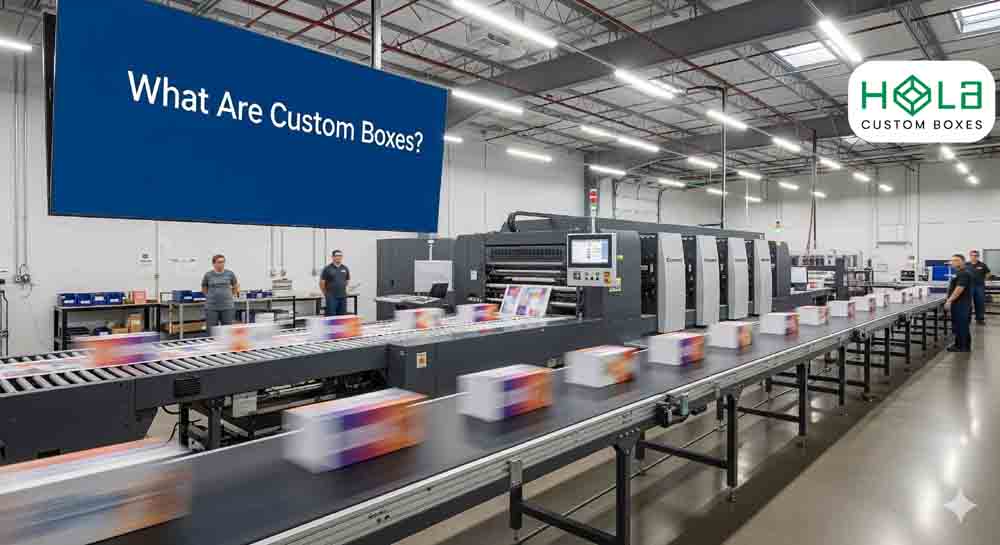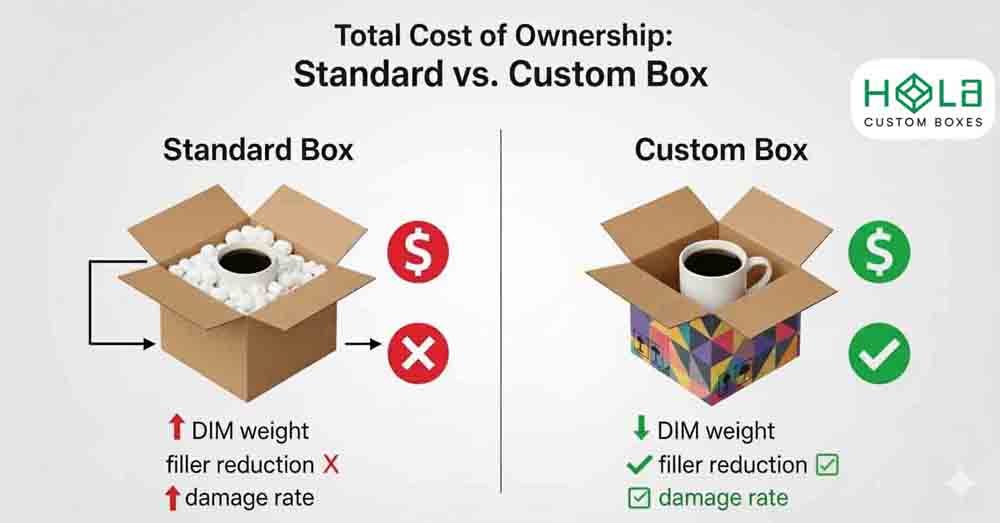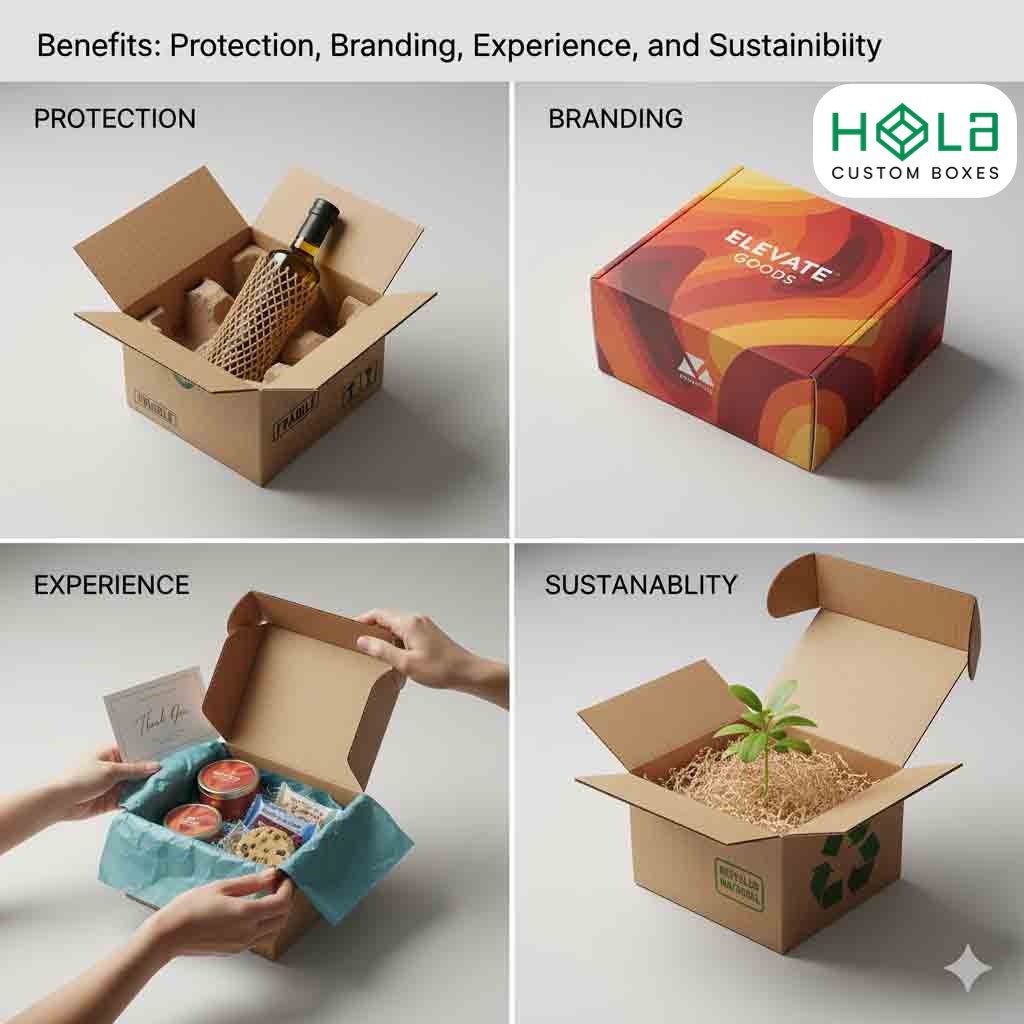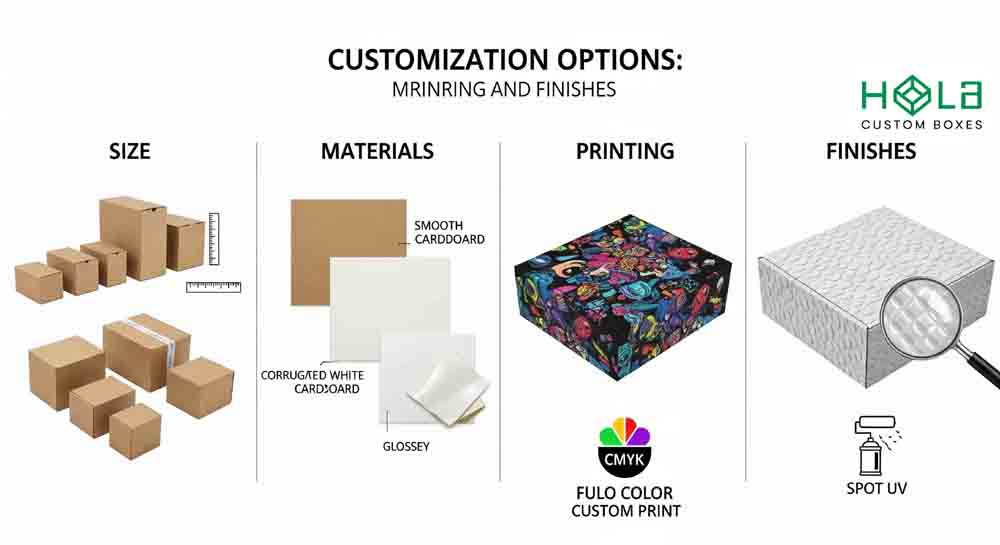What Are Custom Boxes
2025-09-13 11:36:25
What Are Custom Boxes?
Custom boxes are engineered to your product’s exact dimensions and performance specs, not fixed stock sizes. You specify materials, board grade, and cushioning to control compression, impact, and load paths under distribution hazards.
Right-sizing cuts void fill, corrugate use, and carrier surcharges while reducing damage and claims. Printing, finishes, and inserts align with brand and sustainability standards, using recyclable substrates and compliant inks.
You’ll see how design, testing, and cost modeling integrate to optimize protection, speed, and total cost.
For everyday shelf use, brands standardize with retail packaging boxes
Main Points
- Custom boxes are packaging engineered to a product’s exact dimensions, materials, and protection needs, unlike fixed-size stock boxes.
- They reduce total ownership costs by improving cube utilization, lowering shipping and damage rates, and streamlining packing labor.
- Engineered fits and selected board grades protect against compression, impact, and transit shock, minimizing void fill.
- Custom printing and finishes enable branding, compliant inks, and refined unboxing with inserts and organized return flows.
- Options span mailers, shipping boxes, folding cartons, and premium setup boxes, with recyclable, right-sized eco-friendly choices.
Definition and Key Differences From Stock Boxes
Although both serve to contain and protect goods, custom boxes are engineered packaging solutions built to your product’s exact dimensions, mass, and distribution profile, unlike stock boxes produced in fixed, generic sizes.
You define Custom Boxes by fit, structural integrity, and validated product protection under known distribution hazards. You specify packaging material, board grade, and cushioning to control compression, vibration, and impact.
You can deploy custom printed boxes to standardize labeling and elevate unboxing experience within compliant product packaging.
Compared to stock boxes, these packaging solutions minimize void fill, reduce the cost of damaged goods, optimize cube efficiency, and enable eco-friendly materials and right-sizing.
Backed by rigorous quality assurance, our custom printed packaging uses high-quality materials and undergoes regular checks to ensure durability and safe delivery.
Cost Comparison and Total Cost of Ownership

With fit, board grade, and validated protection defined, you can quantify cost beyond unit price by modeling total cost of ownership.
Compare custom boxes to standard boxes using measurable inputs: cube utilization, DIM weight, filler reduction, and damage rate.
Custom packaging solutions typically cut shipping costs by right-sizing, reduce corrugate usage, and minimize product damage through engineered clearances and inserts.
You’ll optimize packing efficiency with faster kitting and fewer SKUs, lowering labor and return processing.
Include cost associated with replacements, carrier surcharges, and handling. Improved product safety reduces claims.
Enhanced brand loyalty from consistent arrival quality compounds savings over time.
For tailored guidance on modeling total cost and packaging choices, reach out to our customer support team at (682) 297-5757 or [email protected].
Benefits: Protection, Branding, Experience, and Sustainability

Even before you price a carton, custom boxes deliver measurable gains across protection, branding, experience, and sustainability.
You specify engineered fits that protect your product by aligning board grade, flute profile, and load paths to weight and dimensions.
Custom Packaging Boxes double as branding tools, applying controlled color and compliant inks to sharpen recognition and trust.
Custom packaging becomes a branding engine—color-controlled, compliant inks that sharpen recognition and trust.
You enhance consumer experience through memorable unboxing, organized inserts, and clear return flows that build brand loyalty.
With tailored packaging and custom shipping boxes, you cut void fill, right-size freight, and advance sustainability with recyclable materials and optimized fiber use.
- Tailored tolerances minimize transit shock
- Structural scoring prevents crush
- Color-managed graphics guarantee consistency
- Right-sized designs reduce waste
- Recyclable materials support circularity
Our customer-centric approach ensures quick support via rush order options and direct communication for quotes and orders.
Customization Options: Size, Materials, Printing, and Finishes
How do you translate performance requirements into a box that fits, protects, and communicates?
Define size to the product’s critical dimensions with tight tolerances to limit shift, improving product safety during packaging and transit.
Select materials by load, compression, and sustainability targets: paperboard for retail clarity, corrugated cardboard for stacking strength, and recycled or FSC-certified options where required.
Specify printing—digital for short runs, flexographic for cost-effective volume, litho-laminating for high-fidelity wraps—aligned to your brand identity and company logo standards.
Choose finishes—gloss, matte, or aqueous—for abrasion resistance and moisture control.
Add emboss/deboss, spot UV, or precision cutouts to elevate customization options.
Luxury launches prefer custom rigid gift packaging boxes with foil/emboss.
Types of Custom Boxes and Common Use Cases

Although packaging goals vary by product and channel, you’ll select from a few primary custom box architectures engineered for distinct performance profiles: mailer boxes for quick assembly and impact resistance in DTC shipments; RSC shipping boxes for cube efficiency, pallet stacking, and higher compression loads; folding cartons for lightweight retail display and high-fidelity graphics; setup (rigid) boxes for premium rigidity and controlled unboxing; and ecooptimized econoflex shipping boxes for reduced material mass and recyclability.
You’ll match Custom boxes to use cases by load, fragility, and shelf intent, then validate product safety and the unboxing experience with transit protocols.
- Mailer boxes: subscriptions, gifts; rapid kitting
- Shipping boxes: bulk, overbox; palletized freight
- Folding cartons: retail packaging; peg/shelf display
- Setup boxes: luxury kits; elevated presentation
- Eco-friendly shipping boxes: curbside recyclability; mass reduction with custom packaging tape
Eco-focused lines choose custom printed kraft packaging boxes
The Custom Packaging Process From Concept to Delivery
With your target architecture selected—mailer, RSC, folding carton, setup, or ecooptimized shipper—the packaging workflow moves into a defined, standards-driven process from concept to delivery.
You start the custom packaging process with an initial consultation to capture product specs, protection goals, print constraints, and sustainability targets.
Collaboration with artists and designers takes place to create a visual representation matched to brand standards. Iterations refine dielines, substrates, inks, and finishes until the design is finalized.
Printing specialists then run the production process using high-quality materials and calibrated presses. Continuous quality assurance checks verify compliance.
Your custom boxes ship in 7–10 business days, driving measurable customer satisfaction.
Is Custom Packaging Right for Your Business?
When does custom packaging justify the investment for your operation? You assess measurable gains: brand visibility, product safety, and logistics efficiency.
Custom packaging lets you right-size cartons to reduce shipping costs, lower damage rates, and cut replacements—driving long-term savings. Specify substrates, coatings, and inserts to meet handling and transit standards while elevating the unboxing experience.
Adopt sustainable packaging to align with eco-friendly practices and regulatory targets. If you seek memorable impressions and higher customer satisfaction, the ROI often exceeds stock boxes.
- Quantify damage-rate reduction and freight optimization
- Validate material specs against ASTM/ISTA tests
- Model lifetime cost, not unit price
- Implement recyclable, certified fibers
- Instrument unboxing KPIs and referrals
Need custom sizing or finishes? Start with our retail packaging collection.
Frequently Asked Questions
What Is a Custom Box?
A custom box is packaging engineered to your product’s dimensions and performance needs.
You select custom box materials, design options, and eco friendly choices to optimize product protection and shipping solutions.
You leverage branding benefits for retail packaging, influencing consumer perception.
You evaluate cost considerations against standards and market trends.
You specify board grade, print processes, and structural tolerances to meet compression, drop, and humidity requirements, ensuring repeatable quality and compliant, efficient distribution.
Are Custom Boxes Worth It?
Yes—custom boxes are worth it. You gain cost effectiveness via optimized pack-out and shipping advantages, plus superior product protection.
Design flexibility and precise material choices align with standards and reduce failure rates. Branding benefits drive retail impact and positive consumer perception. Eco friendly options meet sustainability targets and market trends.
While upfront costs rise, total ownership costs drop through reduced damage, streamlined fulfillment, and consistent dimensional accuracy that improves logistics metrics and shelf presentation.
What Does "Custom Package" Mean?
A custom package means you specify size specifications, material choices, and design options to fit your product and shipping constraints.
You optimize cost factors by reducing void space, align branding benefits with consumer preferences, and select finishes per standards.
You manage a production timeline, validate durability, and assess environmental impact.
You also monitor market trends to refine custom packaging, ensuring performance targets, compliance, and consistent print tolerances across controlled manufacturing runs.
Does the USPS Do Custom Boxes?
No. USPS doesn’t make custom boxes. You can ship with your own packaging if it meets USPS packaging standards.
Verify shipping materials integrity, box dimensions, and weight limits to avoid surcharges or custom rates. Use USPS packaging supplies for Priority Mail, or source creative designs and branding solutions from third parties.
Match delivery options to service levels, and guarantee order fulfillment workflows account for dimensional weight, sealing, and labeling requirements before tendering to USPS.
(Recommended Products)
